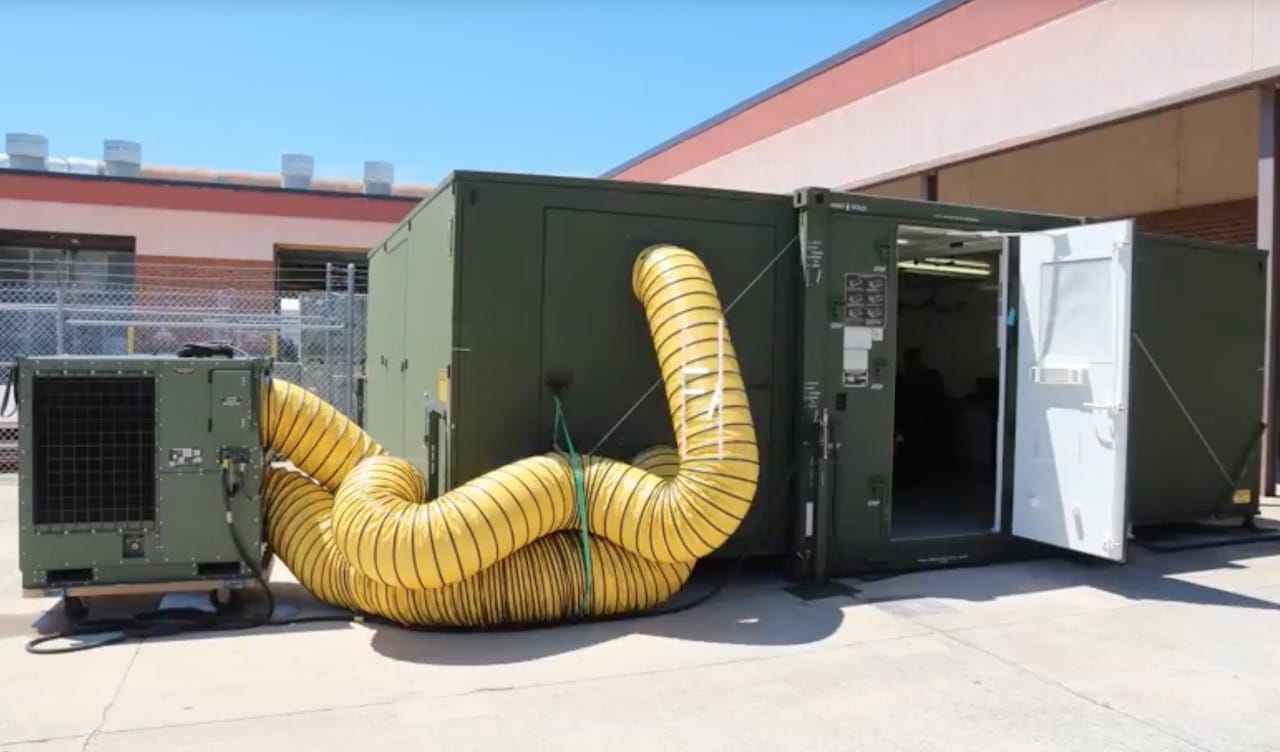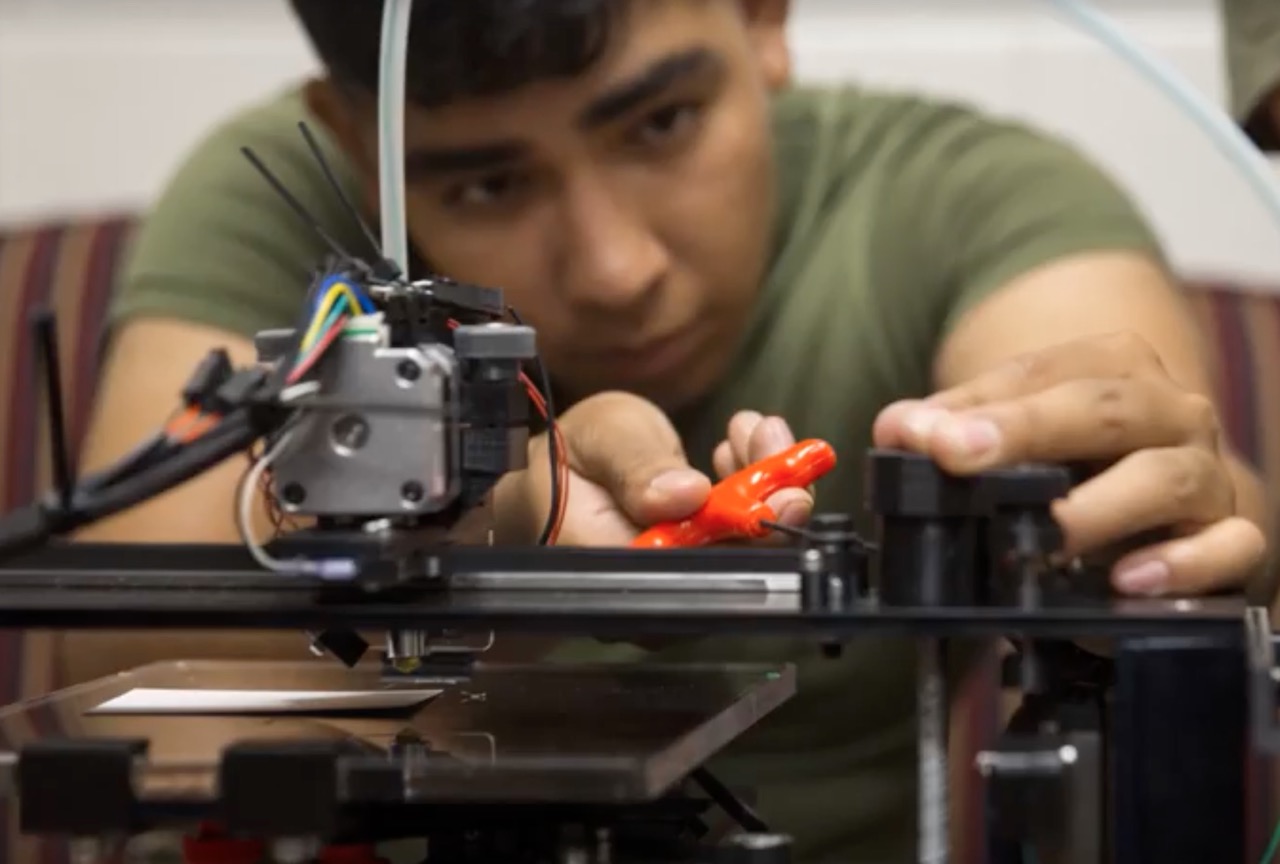
It was inevitable: the military has developed a kind of mobile 3D print workshop.
The “X-FAB” is a 20 x 20 ft (6 x 6m) mobile workshop that contains four 3D printers, a 3D scanner and a couple of 3D CAD workstations. The concept was shown off in a video this week:
According to a report on Soldier Systems, the X-FAB has been undergoing testing since July and will continue until September. It’s a field test of a prototype for the X-FAB concept. However, it is purely experimental, as program manager Ed Howell explains:
We don’t know where the technology will take us, but this is a great opportunity to find out what Marines think about it and explore the viability of additive manufacturing for the C7912 Shop Equipment, Machine Shop.
The Marines already have a deployable mobile machine shop called a “SEMS” (Shop Equipment, Machine Shop), which contains CNC mills, lathes and other traditional making gear. But there’s not advanced 3D printers in this system. Thus, the X-FAB would provide another capability.

Soldier Systems says:
The X-FAB shelter runs on generator or shore power, and takes a team of four Marines two to three hours to set up. It weighs about 10,500 pounds fully equipped, and for now can be transported via a commercial flatbed truck. Future testing will explore transportability options with Marine Corps vehicles.
Staffed by trained machinists, the idea is the X-FAB would be placed in a zone where they could more rapidly produce replacement parts, rather than having them shipped in from distant factories with unacceptable durations.
This would require the accessibility of the 3D designs for a wide breadth of parts that could potentially be called upon to be 3D printed on demand. I’m not sure that vendors providing equipment to the US Marines currently provide their 3D files, but for this to work they may have to. That may be the biggest challenge of the concept.
Another possible use case is the ability for field units to devise and manufacture their own parts, either as superior replacements to their equipment, or as entirely new concepts that would be tested in a real life situation.
As Howell indicates above, this is not a solution, it’s more of a toolbox that offers capability. It’s up to the users, the marines in the field, to make the best use of it.
As it is with any 3D printer.
Via Soldier Systems (Hat tip to Matt)

